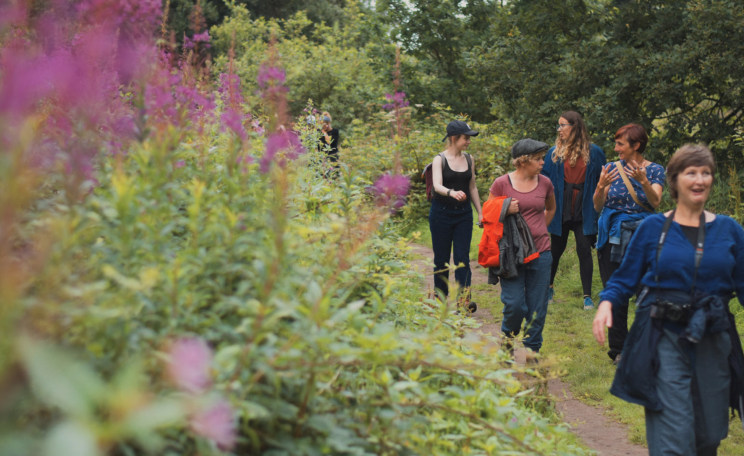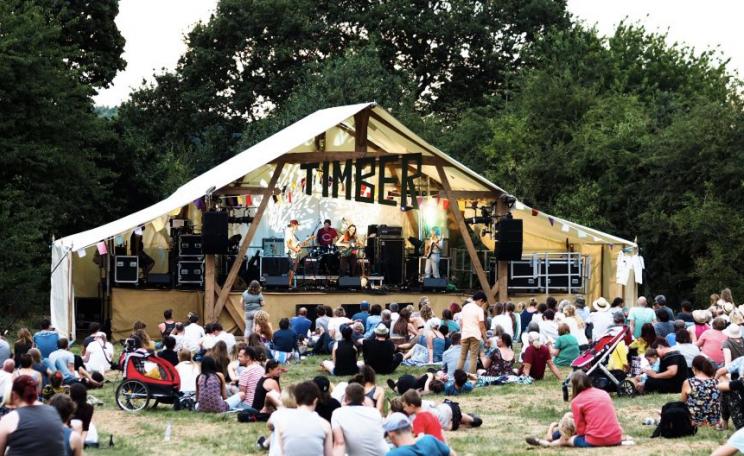The lockdown period during the Covid-19 pandemic has seen an increase in people taking their daily exercise locally, and highlighted the importance of connection with the natural world for physical and mental wellbeing.
Anybody embarking on the journey to become a fully-fledged tree spotter will ask: " How do I tell the difference between two species of trees? They are all so similar.”
The secret: It is all down to practice. Ask a young child and they can instantly tell the difference between a cat and a dog. Although both animals have four legs, fur and a tail the familiarity from picture books and frequent real-life sighting will make this identification second nature. But point towards an oak or a beech, and most people whatever age group, are most likely to answer: “A tree”.
To make a donation to support the next Timber festival, visit JustGiving.
In order to prevent further biodiversity loss, we need to foster an interest in wildlife and help more people to be able to identify a wider range of biodiversity.
Workshop
During the 2019 Timber Festival, staff and students from the National School of Forestry, University of Cumbria, ran a range of workshops, including tree identification for beginners. Using a simple pictorial guide, we introduced members of the audience to the identification of some of the broadleaved trees on the festival site in the heart of the National Forest.
Learning to distinguish different leaf forms and shapes, participants quickly gained confidence as they got their eye in for the important details, and were able to identify a handful of tree species found.
Many went away inspired to identify trees in their local environment. As the facilitator of the workshop, it was great to see people gaining confidence and being inspired to look out for the wider range of biodiversity associated with trees.
The lockdown period during the Covid-19 pandemic has seen an increase in people taking their daily exercise locally, and highlighted the importance of connection with the natural world for physical and mental wellbeing.
The lockdown period during the Covid-19 pandemic has seen an increase in people taking their daily exercise locally, and highlighted the importance of connection with the natural world for physical and mental wellbeing.
The local focus has also sparked an interest in observing the biodiversity surrounding us. Rebel botanists have chalked names of weeds and trees on pavements to raise awareness of the urban flora. Smartphone apps such as TreeTalk, which generates local trails, based on the species and location of 700,000 trees across London, have seen a sharp increase in popularity. Both are excellent examples of engaging the public in the identification of biodiversity.
Biodiversity
In addition to the species diversity, in this context being able to identify specific trees, it is essential to take into account that the term biodiversity has a wider definition than the term “wildlife” suggested by George Monbiot, and adopted in the style guide of The Ecologist.
Biodiversity also encompasses the genetic diversity within the species, which is essential for adaptations, especially to rapid climate breakdown and diseases. Additionally, biodiversity covers the diversity and interactions of species within ecosystems. These may not be as easy for the non-expert to directly assess, but are of real importance for the health and survival of the natural world.
The importance of forests supporting biodiversity cannot be emphasised strongly enough. According to the Food and Agriculture Organisation, forests are the home to 80 percent of terrestrial biodiversity, and more than a billion people depend directly on forests for food, shelter, energy and income.
Timber Festival is located in and inspired by the National Forest, which is a great example of a landscape-scale regeneration project, incorporating sustainable management of nearly nine million trees to enhance biodiversity and encourage public awareness woodlands.
The varied programme of the festival emphasises the multifaceted importance of forests, including that of biodiversity.
Citizen science
Having introduced the idea of tree identification to Timber audience members, the question is: What is the next step? There are plenty of opportunities for the public to engage with tree identification through a variety of activities and citizen science projects.
Many local wildlife trusts and data recording centres are hosting BioBlitzes, where experts are on hand to facilitate identification. There are numerous citizen science projects, where support is provided in the form of identification keys, online support forums and face to face workshops. The Opal Tree survey and Observatree for example both aim to report threats to tree heath from new pests and diseases.
Identifying tree species can be a good starting point for further identification of biodiversity. Many trees form specific interactions with species from other taxonomic groups such as fungi, lichens and invertebrates. Activities such as bush-craft and foraging also rely on the ability to correctly identify floral species.
How to get more people engaged in identification of biodiversity? As mentioned above, it is never too early to start, the incorporation of outdoor learning in the national curriculum can generate familiarity with different tree species from an early age. The introduction of a Natural History GCSE would hopefully incorporate identification skills.
There are numerous courses available through providers such as the Field Studies Council for those with an appetite for in depth learning. Finally, identification keys are available in a variety of formats, from smartphone Apps, such as PlantSnap to the good old fashioned printed field guide.
We would have been running more workshops this year, but look forward to seeing you all again at Timber 2021 for further investigations of biodiversity in the National Forest.
This Author
Dr Dorthe Villadsen is a lecturer in Conservation Science at the University of Cumbria, where she teaches Biodiversity and Conservation Genetics.
Andrew Weatherall works at the National School of Forestry, University of Cumbria. Jo Maker is the Timber Festival coordinator, The National Forest Company. They are together the guest editors of this Special Collection in The Ecologist. To make a donation to support the next Timber festival, visit JustGiving.
Image: Pixabay.




